MOST RELIABLE AND TRUSTWORTHY MODULATION TECHNIQUES ASSIGNMENT HELP & HOMEWORK WRITING SERVICES AT YOUR DOORSTEPS!
Modulation Techniques
Question 1. Convert the binary data "011010" into analog waveforms using following modulation techniques:
Answer: Given input pattern:

a. Two level Amplitude Shift Keying output

b. Two level Frequency Shift Keying output

c. Two level Phase Shift Keying output

d. Differential Phase shift keying output

e. Four level Amplitude Shift Keying output

f. Four level Phase Shift Keying output
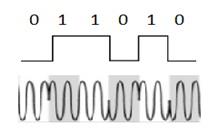
g. Eight level Amplitude Shift Keying output
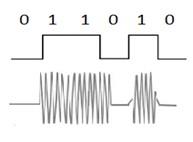
h) Eight level Amplitude Shift Keying output
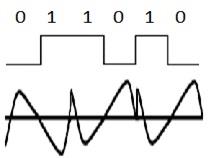
Question 2. With fc = 500 kHz, fd = 25 kHz, and M = 16 (L = 4 bits), compute the frequency assignments for each of the sixteen possible 4-bit data combinations.
Answer:
Given fc = 500 kHz and 2fd = 50 kHz

125 175 225 275 325 375 425 475 525 575 625 675 725 775 825 kHz
Bit representation are as follows:
f1= 0000,
f2= 0001,
f3= 0010,
f4= 0011,
f5= 0100,
f6= 0101,
f7= 0110,
f8 = 0111,
f9 = 1000,
f10= 1001,
f11= 1010,
f12= 1011,
f13= 1100,
f14= 1101,
f15= 1110
HIRE PROFESSIONAL WRITER FROM EXPERTSMINDS.COM AND GET BEST QUALITY MODULATION TECHNIQUES ASSIGNMENT HELP AND HOMEWORK WRITING SERVICES!
Question 3. Draw the approximate Analog Modulation and Frequency Modulation waveforms in complete steps for the following signal:
Answer:
Given input signal

Step1:
c(t) = Asin(2Πfct). [fc = carrier frequency, A = amplitude]

Step2:
m(t) = M cos(2Πfmt + Φ) = Am cos(2Πfmt + Φ) [fm = input sine wave frequency]

Output equation is
y(t) = Asin(2Πfct) + 1/2Am[sin[fc +fm]t + Φ] + sin(2Π[fc - fm]t - Φ)

Question 4. Draw the 16 QAM Constellation Diagram having two different amplitude levels and eight different phase levels.
Answer: 16 QAM Constellation Diagram having two different amplitude levels and eight different phase levels can be shown as
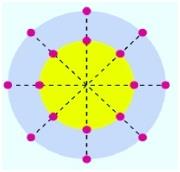
Question 5. Explain and draw the Error Detection Process for Cyclic Redundancy Check.
Answer: The process of finding error in a signal at the receiver end is known as Error Detection Process for Cyclic Redundancy Check.
Let m= number of bit sequence at the transmitter end,
K = bits block
According to this method FCSR is 5 bits for 10bits input pattern and if the required pattern is 6 bits then
Question 6. Compute the frame check sequence for the following information: Message = 10111100, Pattern = 11011
Answer:
|
|
1100
|
|
11011
|
10111100
11011
|
|
|
11001
11011
|
|
|
1000
|
|
|
|
Code-word sent = 10110100
|
|
1100
|
|
11011
|
10110100
11011
|
|
|
11011
11011
|
|
|
000
|
|
|
|
Received data has no errors
ORDER NEW MODULATION TECHNIQUES ASSIGNMENT & GET 100% ORIGINAL SOLUTION AND QUALITY WRITTEN CONTENTS IN WELL FORMATS AND PROPER REFERENCING.
Question 7. Compute the transmitted signal using Direct Sequence Spread Spectrum for the following information:
Input: 1011, Locally Generated PN bit stream: 101011011010, T = 3Tc
Answer: Given, Input = 1011
And Bit pattern = 101011011010
Then Generated pattern = +1-1+1-1+1+1-1+1+1-1+1-1
Finally signal that can be Transmitted = 101011010000
Question 8. What is the difference between Infrastructure and ad hoc modes in WLAN? Draw their relative diagrams as well.
Answer: Infrastructure modes in WLAN composed of one or more access points whereas ad hoc modes in WLAN composed of only stations.
Infrastructure modes in WLAN used to communicate between stations whereas in other case it is done directly.
Question 9. Compare the differences of TCP and OSI protocols for wired and wireless LANs using diagrams.
Answer:
Application, Presentation, Session, Transport are host layer in TCPprotocols for wired and wireless LANs, whereas application, Session, Application are the layer in OSIprotocols for wired and wireless LANs.
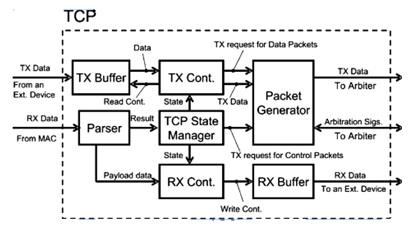
Fig: Diagram of TCP protocols for wired and wireless LANs
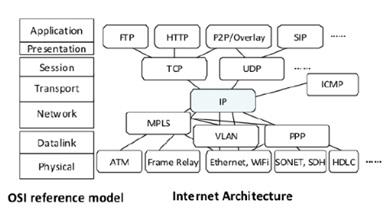
Fig: Diagram of OSIprotocols for wired and wireless LANs
Question 10. Explain why the square and circle shapes cells for cellular communications are not appropriate as compared to hexagonal shape cells.
Answer: Since, the square and circle shapes cells for cellular communications cover an entire area without overlapping i.e. they can cover the entire geographical region without any gaps thus theseare not appropriate as compared to hexagonal shape cells.
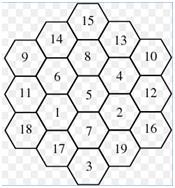
Fig: hexagonal shape cells
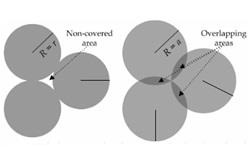
Fig: circle shapes cells
EXPERTSMINDS.COM GIVES ACCOUNTABILITY OF YOUR TIME AND MONEY - AVAIL TOP RESULTS ORIGINATED MODULATION TECHNIQUES ASSIGNMENT HELP SERVICES AT BEST RATES!